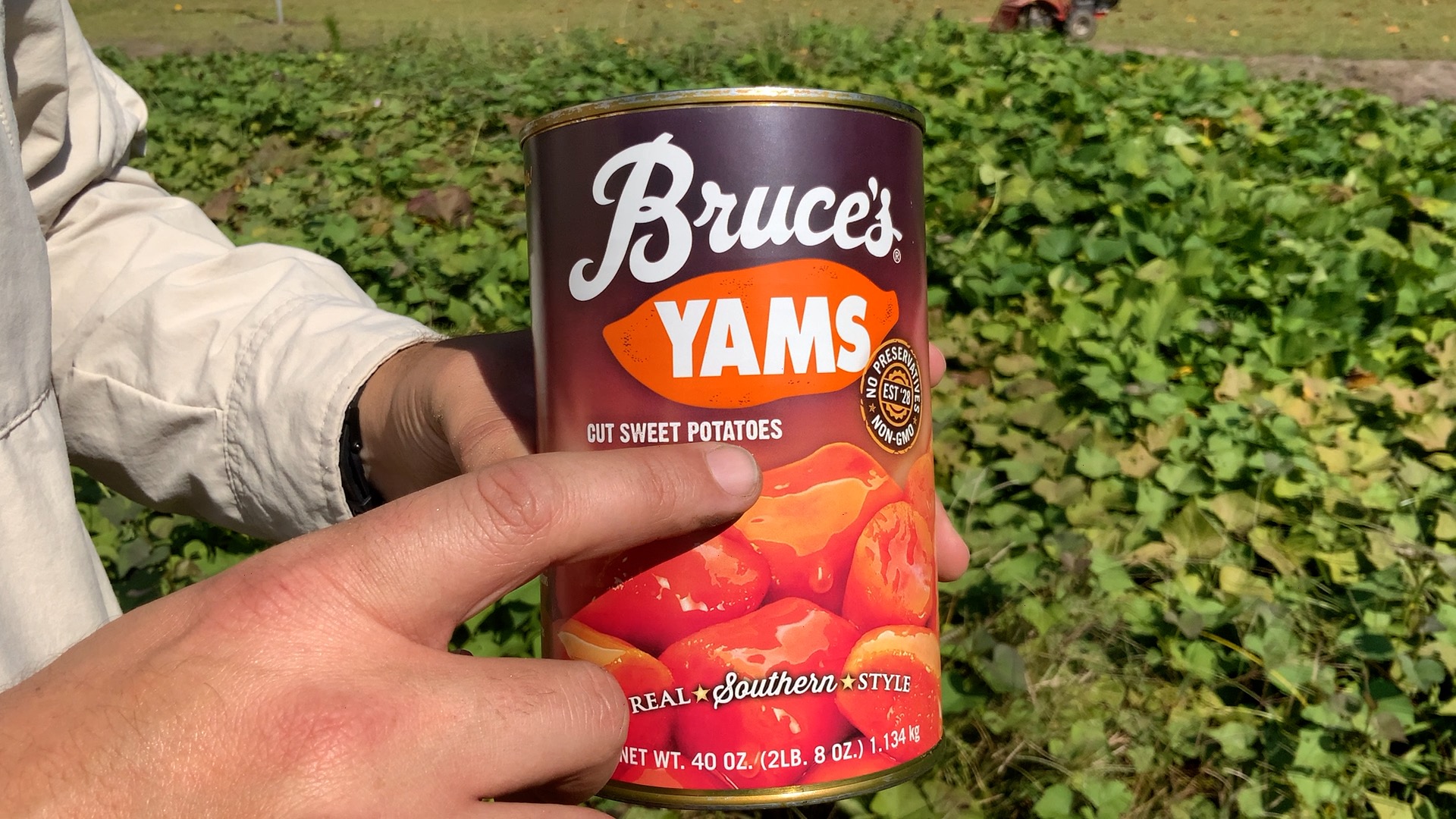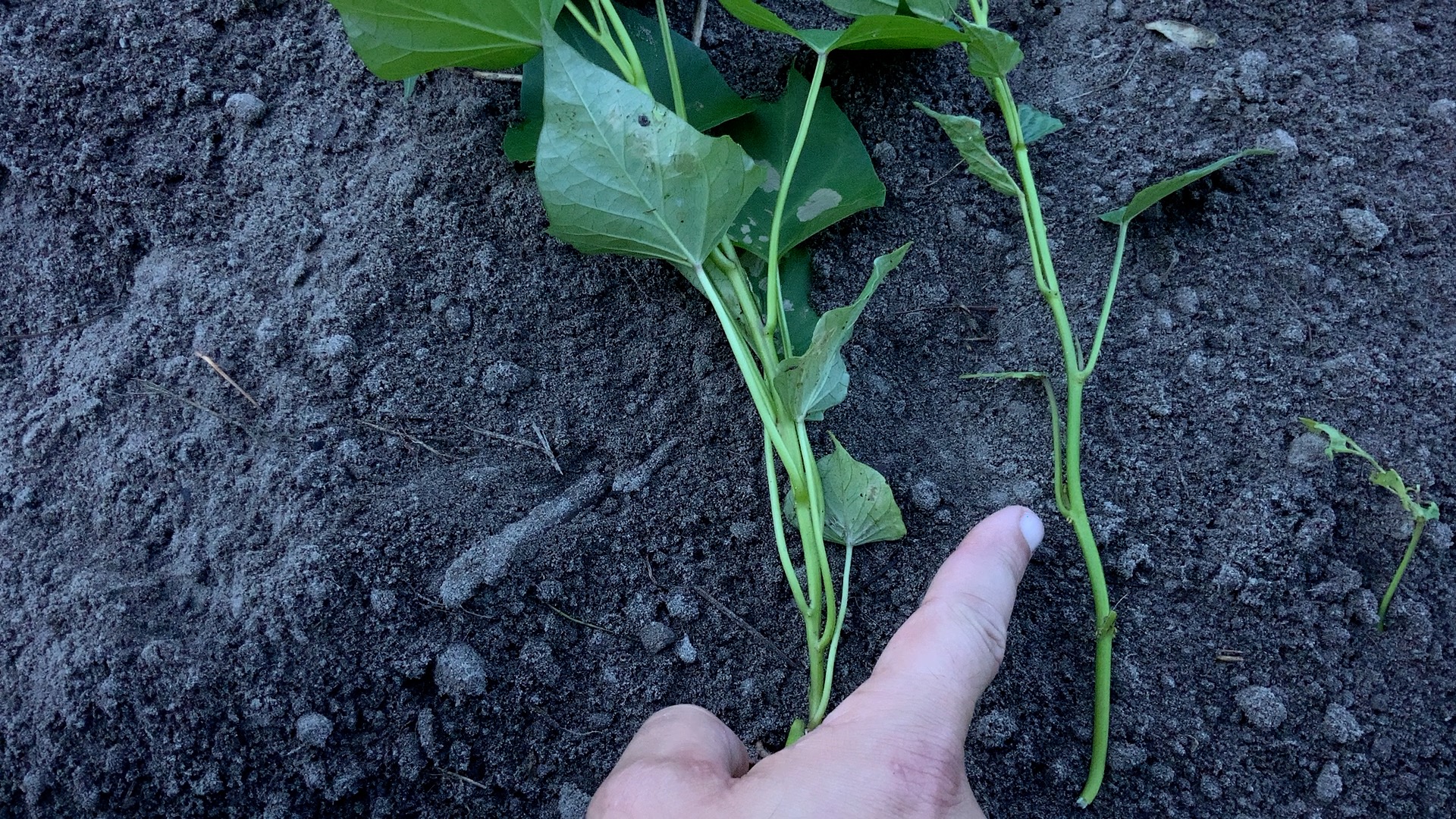The Sweet Season Is Here: Sweetpotatoes
go.ncsu.edu/readext?826641
en Español / em Português
El inglés es el idioma de control de esta página. En la medida en que haya algún conflicto entre la traducción al inglés y la traducción, el inglés prevalece.
Al hacer clic en el enlace de traducción se activa un servicio de traducción gratuito para convertir la página al español. Al igual que con cualquier traducción por Internet, la conversión no es sensible al contexto y puede que no traduzca el texto en su significado original. NC State Extension no garantiza la exactitud del texto traducido. Por favor, tenga en cuenta que algunas aplicaciones y/o servicios pueden no funcionar como se espera cuando se traducen.
Português
Inglês é o idioma de controle desta página. Na medida que haja algum conflito entre o texto original em Inglês e a tradução, o Inglês prevalece.
Ao clicar no link de tradução, um serviço gratuito de tradução será ativado para converter a página para o Português. Como em qualquer tradução pela internet, a conversão não é sensivel ao contexto e pode não ocorrer a tradução para o significado orginal. O serviço de Extensão da Carolina do Norte (NC State Extension) não garante a exatidão do texto traduzido. Por favor, observe que algumas funções ou serviços podem não funcionar como esperado após a tradução.
English
English is the controlling language of this page. To the extent there is any conflict between the English text and the translation, English controls.
Clicking on the translation link activates a free translation service to convert the page to Spanish. As with any Internet translation, the conversion is not context-sensitive and may not translate the text to its original meaning. NC State Extension does not guarantee the accuracy of the translated text. Please note that some applications and/or services may not function as expected when translated.
Collapse ▲A favorite debate around the holiday season might involve your preference for pumpkin or sweetpotato pie. In western North Carolina, pumpkins may reign supreme where a favorable growing environment has thrust North Carolina into one of the top nine pumpkin-producing states in the United States. However, here in Eastern North Carolina, where warmer weather makes pumpkin production more challenging, sweetpotatoes are king, with North Carolina producing roughly 70% of all U.S. sweetpotatoes. Now that sweetpotato harvest is occurring across all of Eastern North Carolina, let’s discuss the possibility of growing this deliciously sweet root in your garden.
Sweetpotatoes (Ipomoea batatas) are a warm-season crop and a member of the morning glory family (Convolvulaceae). Sweetpotatoes are grown for the large storage roots they produce and are sometimes mistakenly referred to as “yams.” Yams are an entirely separate plant and it is unlikely that citizens of the United States have even tasted a true yam. Many products that are marketed as “Yams,” are in fact sweetpotatoes (read the ingredients label).
Sweetpotatoes are an easy crop to grow for most residents of Pamlico County. Well-drained, sandy, or loamy soils with full sun are ideal locations. Raised beds will also accommodate sweetpotatoes, but be sure to loosen the soil and provide ample room for sprawling vines. Gardeners should try to provide a soil with pH of 6.0 and make an application of one pound of nitrogen per 1,000 square feet at planting (ex. 6.5 lbs. of 15-0-0 calcium nitrate provides 1 pound of nitrogen). Approximately 21-28 days after planting, an additional application of 12 pounds of 8-0-24 fertilizer per 1,000 square feet should be applied as sidedress to help with season-long growth.
Sweetpotatoes are grown from vine cuttings called “slips” that are cut from seed roots. These slips can be purchased through garden centers, mail order, and you can even grow them at home from saved sweetpotatoes. Common garden varieties include Covington and Beauregard. Slips can be planted from May 1 through July 15 into raised mounds or rows set 3-4 feet apart. Slips should be spaced 6-18 inches apart within the row and set 3-4 inches deep, with several nodes (point on vine where leaves and roots originate) below ground. A good watering following planting will help to settle the soil and prevent vines from drying out.
Sweetpotatoes are very hardy plants, so do not worry if those slips you plant look like withered cuttings stuck into the ground. Within a week, these plants will begin to grow and form new roots. Weed control is important to good growth, so cultivate often before the vines begin to cover the ground. With warm weather, vines will quickly form a thick mat of leaves and stems that will help with weed control. Several insects feed on the foliage and roots of sweetpotatoes. Foliage damage might include small holes or etching of leaves, but the insects causing this damage can be easily controlled with common garden insecticides. Soil dwelling insects that feed on roots are harder to control. Crop rotation and garden sanitation is important for these insects.
Harvest of sweetpotatoes occurs around 90-120 days after planting. The only way to know if sweetpotatoes are ready for harvest is to dig up the roots and evaluate them for the size you prefer. Following harvest, sweetpotatoes are typically cured with temperature and humidity (80-85°F & 90% humidity) to help develop a sweet taste and aroma. For the home gardener, this might be accomplished by placing sweetpotatoes in a container in a warm room and covering the container with a piece of plastic for 5-7 days. Following curing, sweetpotatoes can be stored in a cool, dark place for several months.
To learn more about sweetpotatoes and its uses, visit the NC State Extension Homegrown Sweetpotato page. You can also find some interesting facts and recipes through the North Carolina SweetPotato Commission website.
For more information or assistance on this subject please contact Daniel Simpson at 252-745-4121 or daniel_simpson@ncsu.edu.






